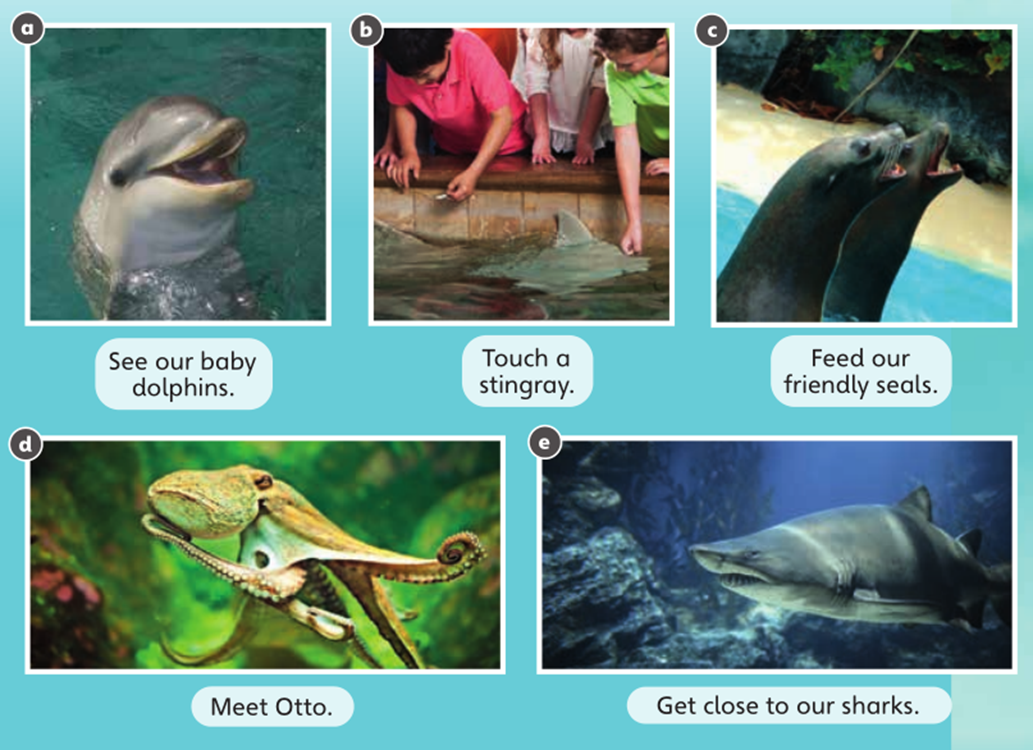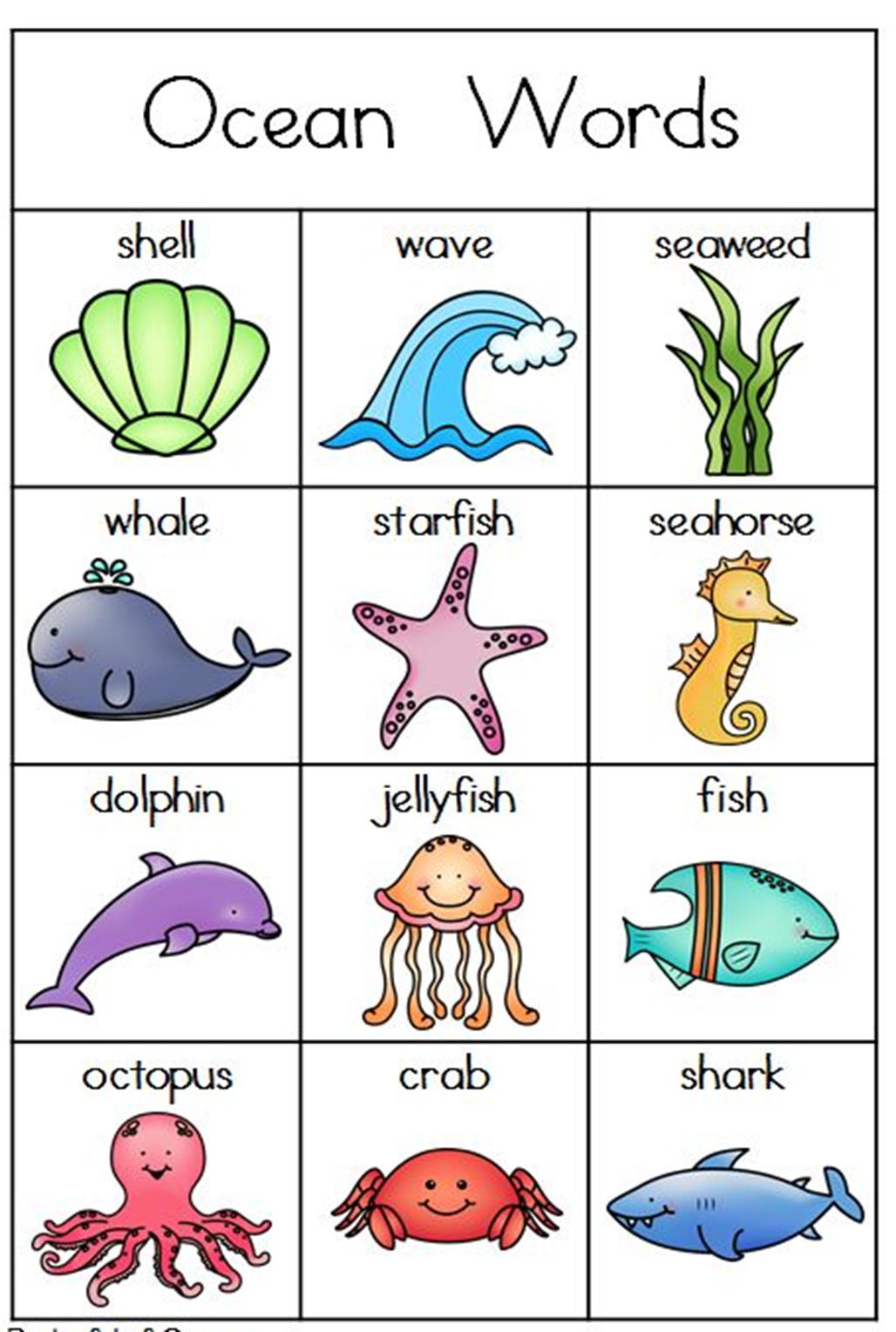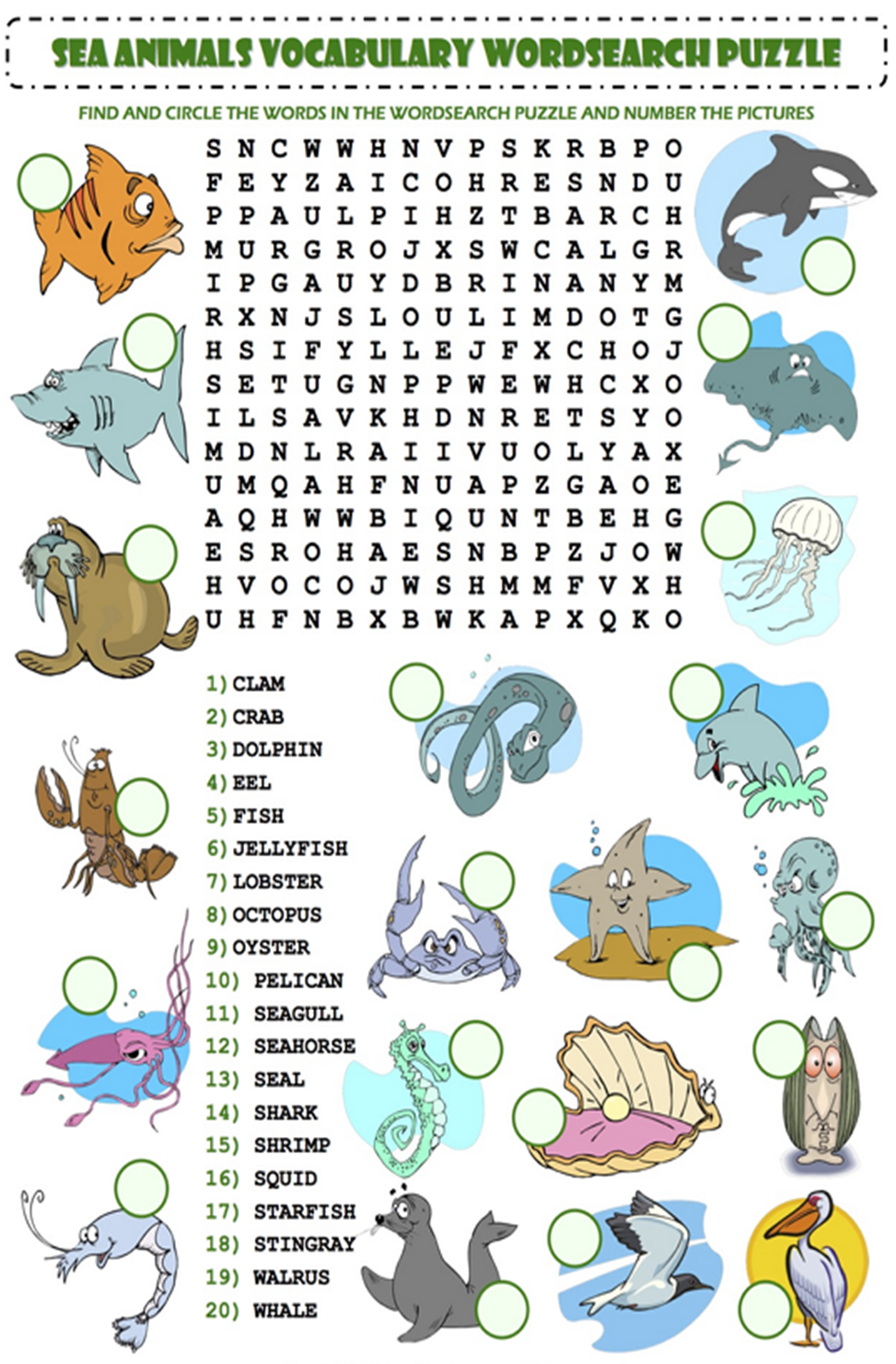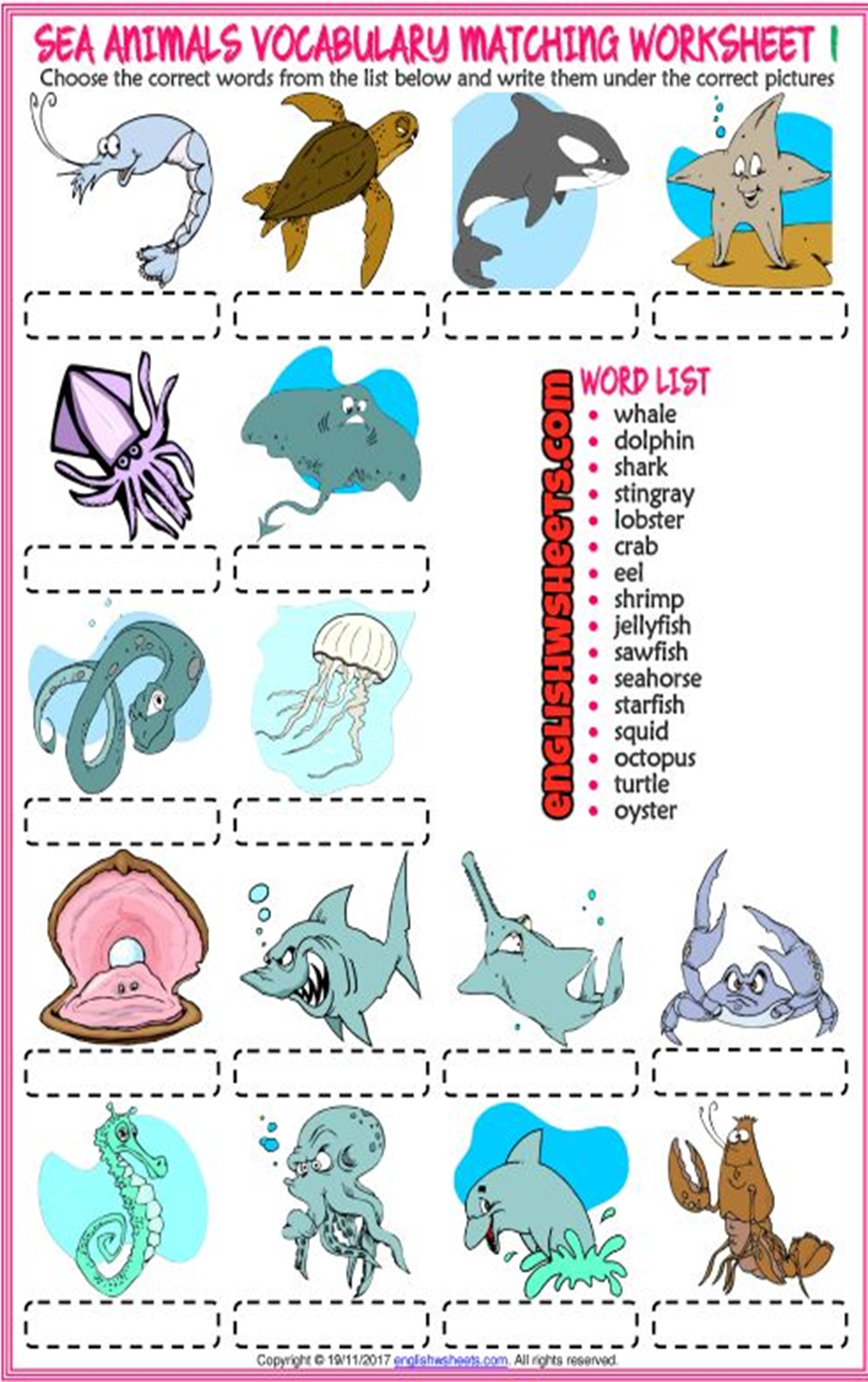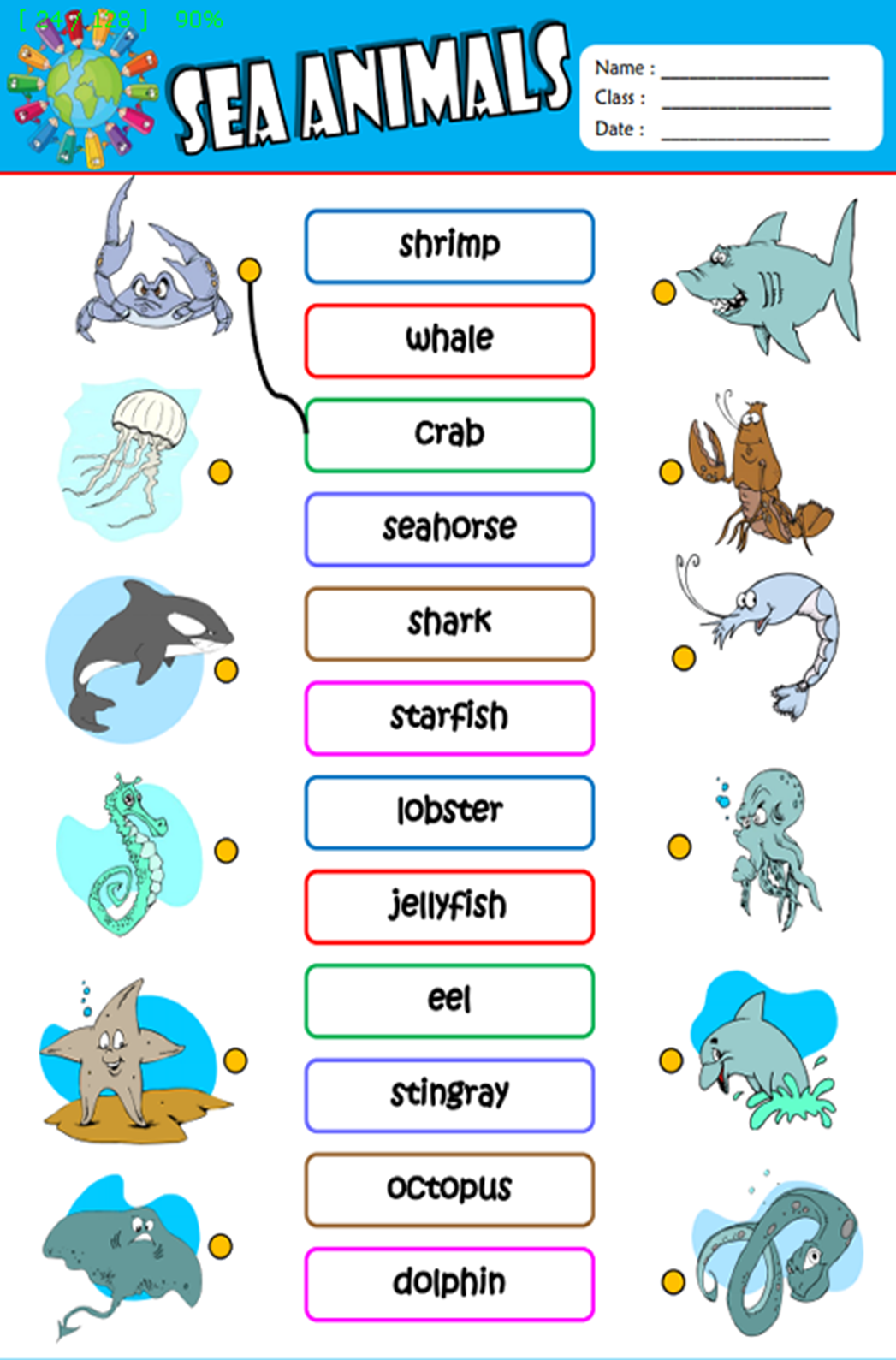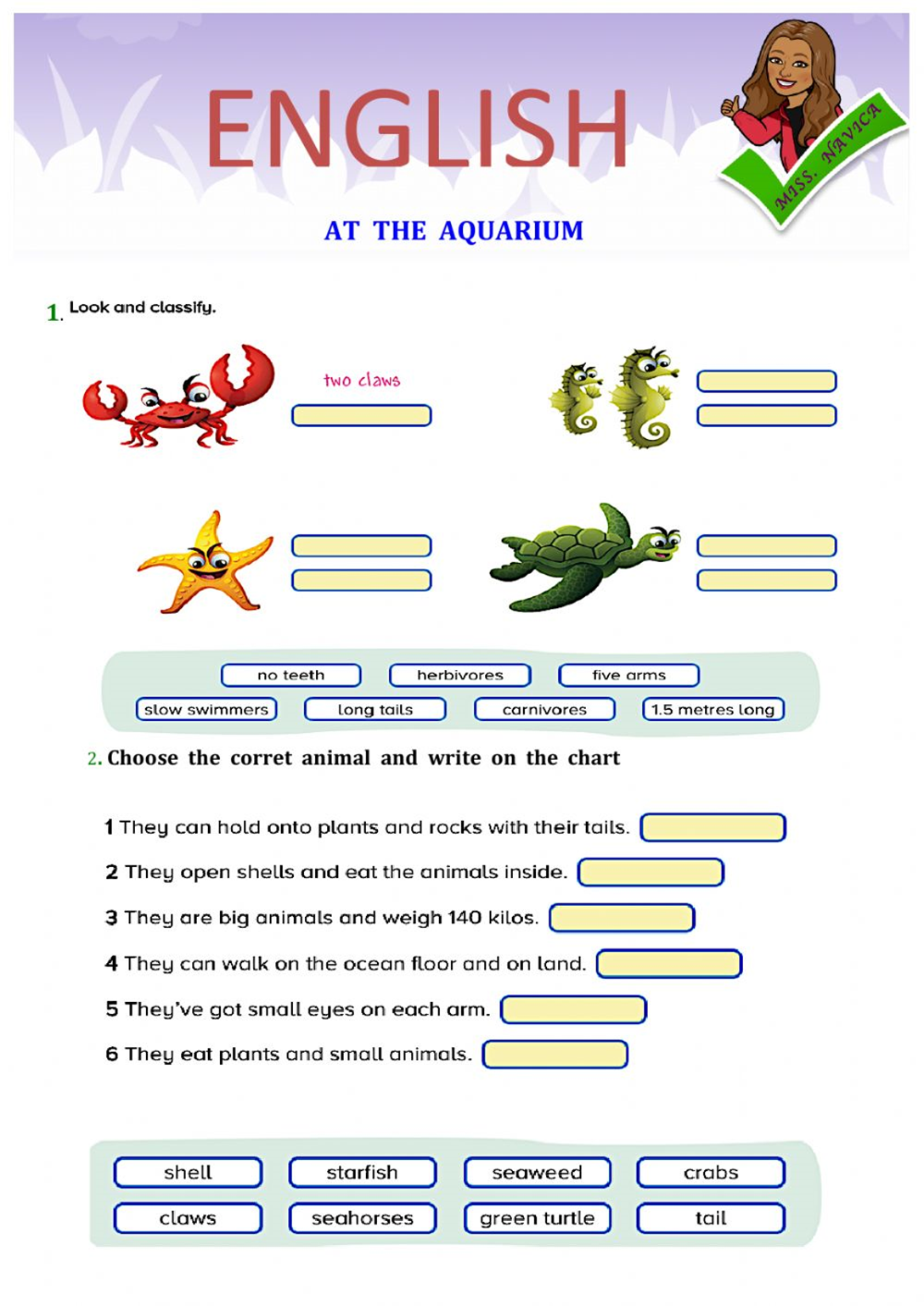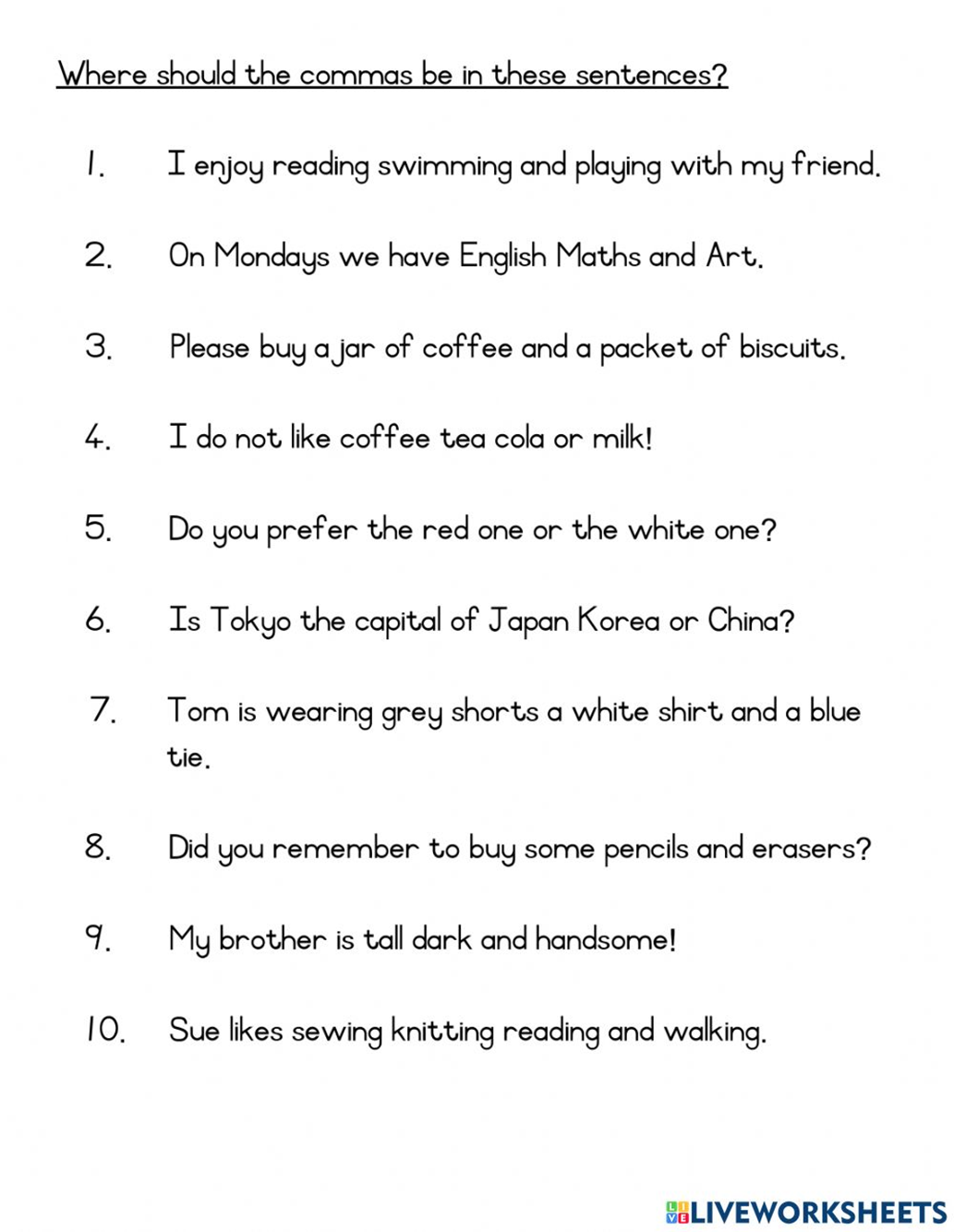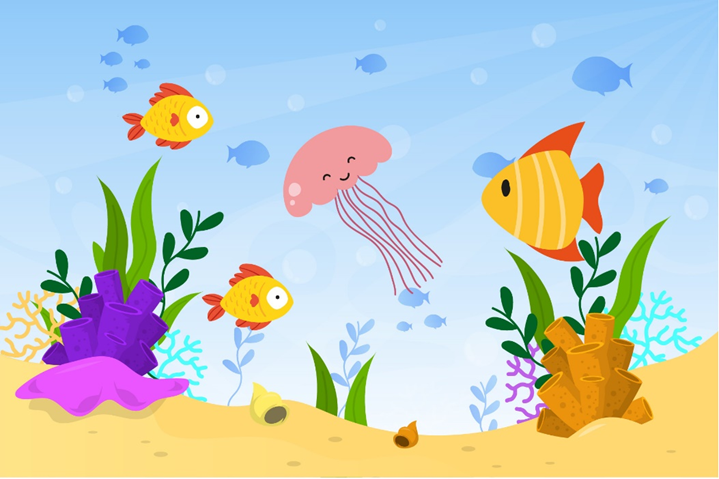 Theme: At the aquarium
Theme: At the aquariumAims:
Educational: - students practice the skills of listening and speaking, with reading in the Workbook.
Developing: - learning vocabulary for sea animals
Learning outcomes: At the end of the lesson students practice the skills of listening and speaking
Competence: SC1, FLCC, and PC
Type of the lesson: Mixed, group work, pair-work, individual work
Method of the lesson: nontraditional, mixed
Equipment of the lesson: “Guess What 5” SB, WB, pictures, internet, computers, projector
TECHNOLOGICAL MAP OF THE LESSON:
№ | Part of the lesson | Tasks | Time |
1 | Organizational Moment | -to greet pupils. - to check up the register | 5 min |
2 | Repeating last lesson | - to give pupils some questions about last lesson. | 5 min |
3 | Explaining new theme | - to explain to pupils new vocabulary and theme | 20 min |
4 | Consolidating new theme. | - to consolidate new theme and new words of the theme. | 10 min |
5 | Marking. | - To mark pupils | 5 min |
6 | Homework. | - Giving homework. |
Procedure of the lesson:
I. Organizing moment: Motivation, Greeting, checking attendance, season, weather, checking the preparation for the lesson.
- Check for homework given on past lesson.
- Ask pupils all new words learnt on previous lesson.
II. Pre-activity:
• Play Ten lives (see page xvii) with words for sea animals.
 What can you see at an aquarium?
What can you see at an aquarium?• Ask Who likes going to an aquarium? Students raise their hands. Then ask the opening question: What can you see at an aquarium? Teach any new words as necessar
III. Main part
Activity 1 Which animals do they see? Listen and say the letters.
• Students look at the brochure and read the captions describing what you can see or do at the aquarium. Ask Would you like to see a baby dolphin? Would you like to touch a stingray? Would you like to feed seals? etc.
• Say Now listen to Ava and Paco. They are at the aquarium. What do they see? Which animals don’t they see?
• Play the recording. Students listen and say which animals the children don’t see. They then say the letter of the animal the children are describing in each section of
the dialog

1 Paco: Come on, Ava. What should we do first?
Ava: Let’s go and see Otto!
Paco: Who’s that?
Ava: It’s a giant Pacific octopus! It’s the largest octopus in the world. Look, it’s over there!
Paco: Cool! He’s enormous!
2 Paco: Look, Ava, over here! There are some baby dolphins.
Ava: So cute! One, two, three baby dolphins. Wow!
Paco: There are four – look, there’s one behind its mother.
Ava: Oh, yes!
3 Ava: What do you want to do next? Should we see the stingrays?
Paco: No. Let’s walk in the shark tunnel. I love sharks.
Ava: Do you? I think they’re dangerous. I prefer dolphins. They’re friendlier.
Paco: Not all sharks are dangerous, Ava. And sharks are definitely the most exciting sea animals.
Ava: Maybe – but I still like dolphins better.
4 Ava: What time is it now, Paco?
Paco: It’s three o’clock.
Ava: OK. Let’s go see the seals. We can help feed them.
Paco: What time do they feed the seals?
Ava: At a quarter after three.
Paco: OK, let's go!
Activity 2 Listen again and say the missing words.
Students read the sentences about the aquarium trip and guess the missing words. Then play the recording again for them to listen and check.
Activity 3 Plan a trip for this weekend.
• Ask Where would you like to go this weekend? Elicit places to visit, e.g., the beach, an aquarium, a soccer match, a museum, a movie theater, and write them on the board. Then ask How can we get there? Elicit means of transportation, e.g., bus, train, car, cab, bike, and write these on the board.
• Say Let’s plan a trip for this weekend! Play the recording. Students listen while reading the conversation prompts in the speech bubbles. They then work in pairs or small groups, planning their own trip for the weekend. They use the example speech bubbles to help.
• Students can then read their conversations aloud.


IV. Post-activity
Workbook activity 1 Read Sara’s blog and circle the correct words.
• Students read and circle the correct words in the blog.
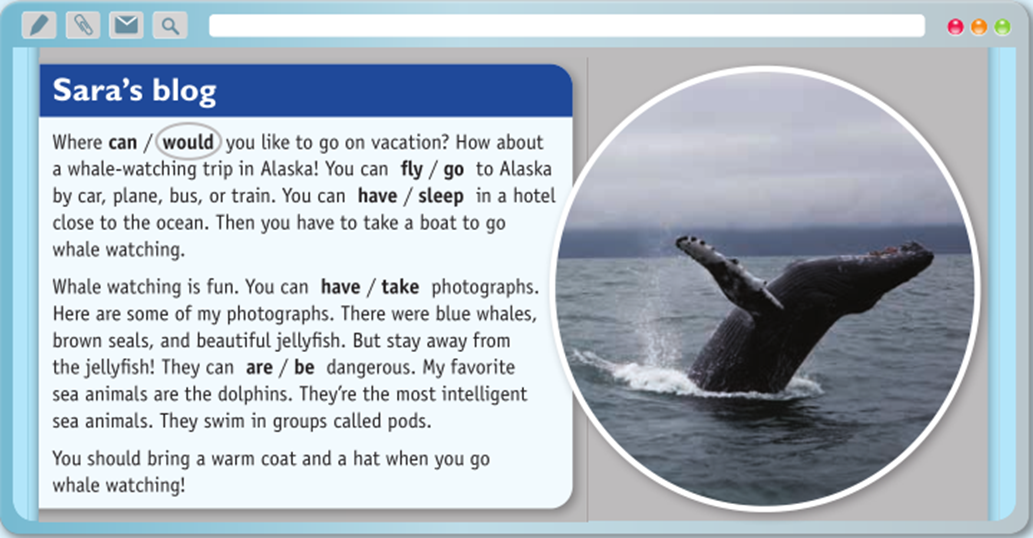

V. Homework
Workbook activity 2. Look at activity 1. Read and write true or false.
• Students read the sentences about the blog and write if they are true or false. Students can correct the false ones.

 Workbook activity 3 How to use commas
Workbook activity 3 How to use commas• Students read the rules about using commas. They then read Sara’s blog again and circle the commas. They also underline the sentence with two things that don’t need
a comma
.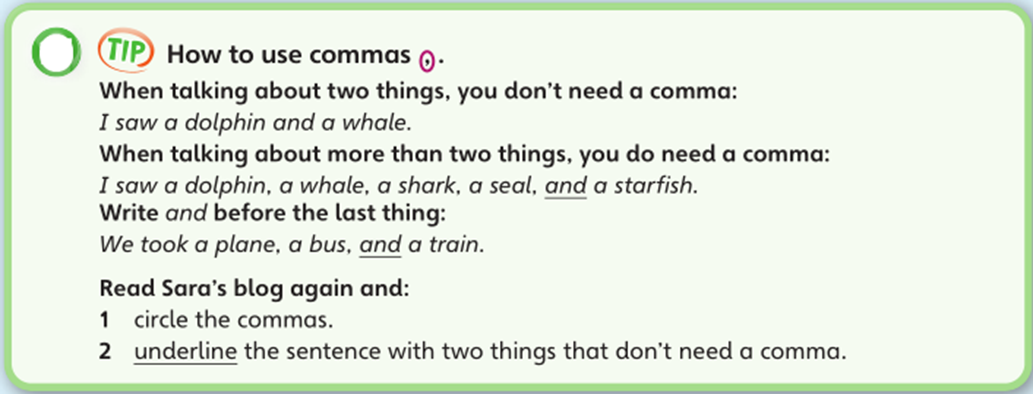
VI. Ending the lesson
• Play the Drawing game (see page xv) with sea animals.
 Deputy director on educational affairs: _________ Signature: __________
Deputy director on educational affairs: _________ Signature: __________

